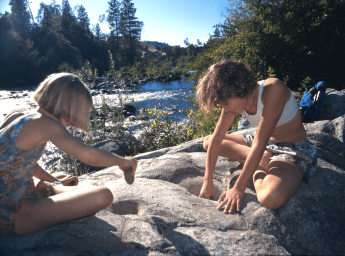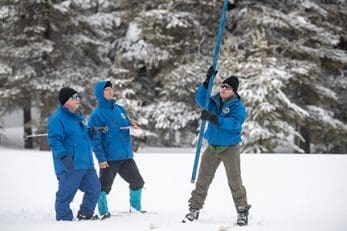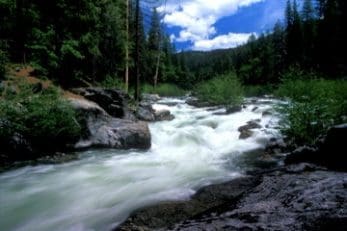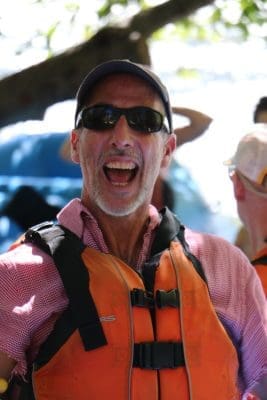
MaLode first encountered Cassidy Bell back in the 20th Century, before many of our younger boaters were born, and long before the internet, cellphones or personal computers. Imagine a time in which attention spans averaged over 20 minutes, as opposed to today’s average of 23 seconds. Yes indeed, it was a different time. Yet it was very much speeded up compared to the time we are about to visit. The time of the indigenous people who once inhabited Mother Lode, the Nisenan.
Cassidy Bell, “Cass”, to his many friends, who I believe I count as one, was a student guide when I first met him. He literally stood out in his class, being well over six foot tall, a gangly youth perhaps 18 years of age or so. He had a slow and deliberate way of moving and a lacksadaisical pace of speech. I would eventually learn that my first impressions of Cass were mostly dead wrong. In fact, far from being slow, Cass was a tremendous athlete who experienced the world in a different dimension. When facing challenges that overwhelmed most mortals, Cass seemed to see things in slow motion, yet respond as though he was moving at warp speed.
Ironically, Cass was not the head of his guide school class. In fact, for reasons I cannot remember, Mother Lode didn’t even hire him in his first season. As proof that he was a gem in the rough though, he was hired by another company. Impressively, by the end of that first season he was not only their best guide, but their manager! Fortunately for us, as the next season rolled around, Cass came home to MaLode. The rest is the stuff of legend.
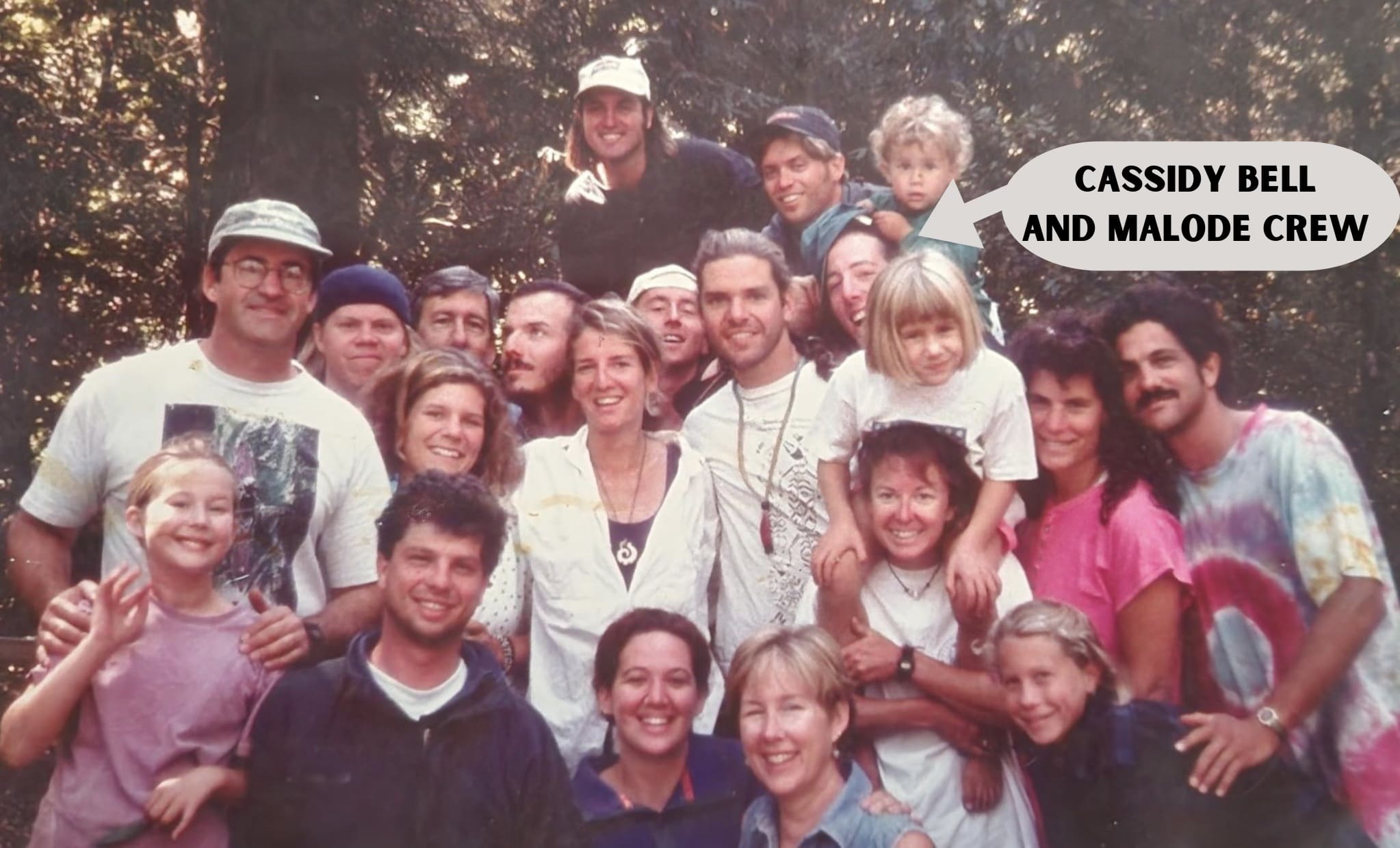
One part of the Cassidy Bell legend is the history of the discovery of the Nisenan grinding stones. It begins with the “Bio”, MaLode’s name for the 4-mile-long stretch of Class II-III whitewater on the South Fork of the American between Coloma and Greenwood Creek. In a spirit similar to Martin Litton’s naming of his dories on the Grand Canyon for rapids drowned by dams, our guides named this stretch in honor of the Bio Bio River, a once famous Class V run in Chile also destroyed by a dam. Locals now call it the “C to G” run and it has since become very popular with the addition of the BLM access at Greenwood Creek. I think this moniker has less of a ring to it, but it doesn’t diminish the fact that it is a delightful evening kayaking run with play holes at Barking Dog Rapid, ARTA Rock and ending at Mother Lode Camp with Highway Rapid.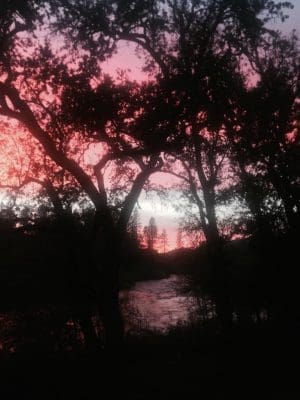
As you do, one evening Cass was enjoying surfing in the holes on the Bio, observing the abundant wildlife that emerges as evening approaches, and finally eddying out at Highway Rapid to witness the spectacular sunset. No doubt Canadian Geese flew overhead, honked and skittered to a stop on the water’s glasslike surface. Perhaps an Ouzel dipped on a rock, then suddenly dived into the river to pursue waterbugs as the bird “flew” underwater upstream. A river otter may even have poked up its head curiously. I can definitely hear a beaver slap its tail and the sound echo in the valley. It would have been exceptionally beautiful and still. As the sky began to glow brilliant orange, Cass just had to get a better look! So, he gamely pushed aside a dense overgrowth of blackberry vines, positioned himself on a prominent granite outcropping, and made an amazing discovery.
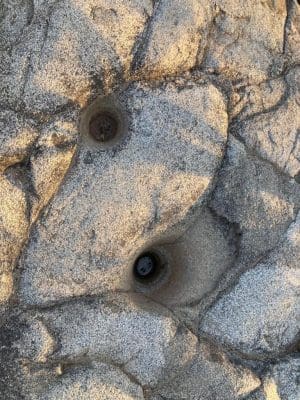
Hidden amongst the blackberries were a collection of ancient Nisenan grinding holes. These were worn into the granite by “Chawse”, the Native American word for “grinding rock”. In an age-old process, acorns were gathered by the Nisenan from under the nearby towering oak trees, then leached in water to extract their toxic tannins. Then the acorns were ground into meal in these holes by the women of the tribe. One hole was nearly a foot deep! We would later learn that each ½ inch of depth represented about 100 years of use. Cass had discovered evidence of an ancient Nisenan village…
You might expect that Cass would be so excited that he would share this discovery with the other guides and hopefully with the “owner” of the property, that is, myself. Of course, like in so many cases when it came to Cassidy Bell, you would be wrong! Cass had not discovered a mere novelty, but for him, a sacred place. Rather than spreading the word about the grinding holes he decided to keep them a secret. He chose instead to commune with them and show them his deepest respect. He brought a 2 x 12 inch, ten- foot-long piece of lumber and laid it carefully near them. He then spent the night sleeping on that board and experiencing the magic of the stones. This would be quite a story if things ended there. However, it did not.
 Each evening Cass would disappear to, well, where did he disappear to? It was a mystery known only to Cass. An entire summer passed by with many river trips, guide parties, flips, swims and adventures. Mother Lode wrote thousands of letters to help save the Tuolumne River from dams by adding it to the Federal Wild and Scenic River System. Shyly at first, then boldly, Cassidy Bell stepped forward to deliver these letter writing talks. His talks were increasingly filled with the passion he felt for the “T”, particularly after multiple visits to the river. In fact, his “FOR” (Friends of the River) talks grew to be so moving, people often burst into tears as they wrote their letters.
Each evening Cass would disappear to, well, where did he disappear to? It was a mystery known only to Cass. An entire summer passed by with many river trips, guide parties, flips, swims and adventures. Mother Lode wrote thousands of letters to help save the Tuolumne River from dams by adding it to the Federal Wild and Scenic River System. Shyly at first, then boldly, Cassidy Bell stepped forward to deliver these letter writing talks. His talks were increasingly filled with the passion he felt for the “T”, particularly after multiple visits to the river. In fact, his “FOR” (Friends of the River) talks grew to be so moving, people often burst into tears as they wrote their letters.
Finally, summer ended. One evening before he departed, Cass pulled me quietly aside. We took a walk upstream from the Main Beach and carefully threaded our way through the virtually impenetrable blackberry thicket present there, until we reached his 2 x 12 wooden plank bed. I was blown away!
Little did I know that over the ensuing years the combined forces of flood, our stonemason Jose Garcia’s skillful work, and my own curiosity would reveal a huge complex of over 30 grinding holes. These evoked the image of perhaps two dozen Nisenan women chatting and busily grinding acorns into meal for their families, as their menfolk fished with spears and nets for the Salmon migrating upstream in the river. Eventually, Jose and I would clear the remaining blackberries, build river stone pathways for access, fashion a large stone fire ring for interpretive talks and a second ring for the river sauna. The final touch was a stone pathway to “Cassidy’s Eddy”, for a chilly dip.
When the Native American History Program began in the year 2000, it would be centered around these stones. Thousands of school children would soon discover their magic. Increasingly, I would come to realize that I was not so much the owner of this place, but rather its steward. As Chief Seattle observed long ago, “the Earth does not belong to us: we belong to the Earth”. Cass had been right all along. We had discovered sacred ground. As ancient Native American wisdom observes, rivers are truly ‘the veins of the Earth’.
With Respect,
Scott Underwood
